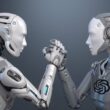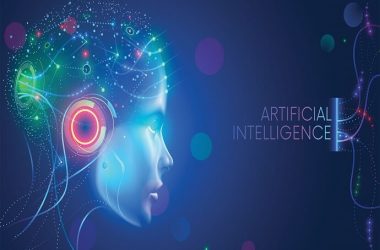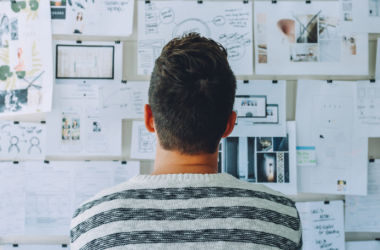If you haven’t been living under the rock, you would know that artificial intelligence has become an ultimate game changer with its endless applications in every industry. Ranging from manufacturing to product designing and information technology, artificial intelligence, deep learning, machine learning, and computer vision along with other disruptive technologies are the goals of companies.
With the implementation of AI-oriented systems, automation has become quicker, more efficient, and cost-effective. In this blog, we will be sharing a brief guide to visual inspection with artificial intelligence. So, are you ready to dive deeper into the AI world?
How To Tell Your Heritage by Visual Inspection – What Is It?
The visual inspection is defined as the product analysis on the production lines to ensure effective quality control. It can be utilized for external as well as internal assessment of several types of equipment. Visual inspection processes are implemented at regular intervals and it’s famous for identifying the underlying and hidden defects in the processes and production systems.
For the most part, visual inspection is used in the manufacturing niche for assessing defects and quality control. On the contrary, it is suitable for determining if the features related to the target are available and helps prevent adverse impacts in the case of non-production environments. In several industries, visual inspection is known to be a high-priority process.
This is because visual inspection helps identify the high-cost errors that arise through inspection. That being said, it helps prevent loss of costly equipment, injuries, scrapped items, fatality, reworking, and customer loss. Some of these industries include baggage screening units, nuclear weapons, aircraft maintenance, nuclear power, food industry, and medicine.
Why Aren’t We Sticking to Manual Inspection?
Why are we spending hundreds and thousands of dollars on AI systems? Why are we researching this arena so much? Well, old might be gold but manual inspection is pretty much limiting. This is because manual inspection demands an inspector who performs the assessments and passes out the judgment according to his/her knowledge. Also, there are no automated machines or equipment used which inherently makes manual assessment a time-intensive process.
According to the researches, the visual inspection errors range from 20% to 30% which are caused by space limitations and human errors. Sure, some errors can be prevented through practice and training but the error probability is still there. Manual inspection can result in missing defect identification or inaccurate identification of defects.
With manual inspection, it’s needless to say that the human eye can be fooled pretty easily unlike mechanical cameras and automated inspection. Similarly, the human eye and vision are not dependable since optical illusions can easily fool a person. Secondly, human eyesight is not precise and leads to imprecise measurements. Not to forget, manual inspection is an added cost (you have to hire an inspector, right?.
How To Tell Your Heritage by Face – The Modern-Age Visual Inspection
With automation in the tech world, automated visual inspection has become the ultimate option to overcome the errors that tend to come up with manual inspection. The automated inspection systems tend to exceed the standards of manual inspection. With machine vision and deep learning, it’s pretty much easy to create smart systems that implement quality checks with fine and intricate details.
And no, it’s not only about walking-talking robots for automating the inspection but the smart processes that are created with deep learning. The deep learning approach includes image acquisition, classification, pre-processing, and extraction of features. Also, visual inspection is often classified in image processing and object detection.
The Integration with Deep Learning
The deep learning technology tends to use neural networks with thousands of layers for adapting the human-level intelligence for distinguishing characters, anomalies, and parts while bearing the variations in patterns. That being said, deep learning integrates higher efficiency of computerized systems and adaptability of manual visual inspection.
Deep learning is responsible for teaching the machines to learn by example (yes, that’s what humans are famous for). Also, the cost-effective and new hardware has made it easier and practical to implement the multi-layered deep neural networks. As a result, the equipment is able to identify the images, differentiate between trends, and make smart decisions and predictions.
How To Tell Your Heritage by Face – Machine Vision is the Key
Machine vision is known to be the technology that’s suitable to provide image-oriented automation inspection. The machine is the system that utilizes visual computing for seeing the activities that are implemented on the production line. The automatic inspection system includes the image acquisition device, output devices, software, processor, sufficient lighting, and a camera.
It can surpass human vision with qualitative and quantitative measurements of the structured areas. The machine vision systems can assess the minor object details and offer inspection without compromising on reliability or causing errors. As for the production industries, machine vision systems can inspect thousands of parts in a minute without compromising on reliability.
The Pros of Automated Visual Inspection
When we talk about automated visual inspection, the first benefit is better perception since machine vision allows higher optical resolution. With the wide visual perception spectrum, visual inspection helps perform observation in the infrared, X-Ray, and ultraviolet regions. Not to forget, automated visual inspection promises faster observation and deliver precise calculation.
The visual inspection systems have the power to manage high processing speed. In addition, the systems are completely programmable and unbiased, hence precise functionality. The automated visual inspection can handle the absolute dimensions in a structured and standardized manner. Lastly, it’s recommended for environments where humans cannot work (high-risk or dangerous areas).
The Prerequisites of Visual Inspection
- Hardware – To implement the visual inspection systems, the companies have to acquire various hardware equipment that streamlines the functionality. The hardware equipment includes the colorimeter, photometer, camera. In addition, there are secondary equipment that’s chosen according to the automation process and/or industry
- Software – For automated visual inspection, the companies and users do need a software layer which is actually the computer vision technology that helps identify the objects and products for defects and gaps in a specific part. In addition, the software needs advanced analytical algorithms and programming
Visual Inspection with Image Processing & Object Detection
To begin with, image processing is known for manipulating the images for extracting information or enhancing the images. There are two primary methods of image processing, such as digital image processing and analog image processing. Analog image processing is known for processing physical printouts, photos, and hard-copy images.
On the other hand, digital image processing is known for manipulating digital images through computerized algorithms. The primary focus of image processing is visualization, image retrieval, image restoration, image sharpening, pattern recognition, and object measurement. Also, image processing helps with the classification of objects and eases image searching.
As far as object detection is concerned, it’s the computer technology that’s related to computer vision that detects the instances of semantic objects in digital videos and images. Object detection has various appliances in image annotation, face detection and recognition, co-segmentation, and activity recognition. Also, it’s perfect for tracking objects and movements.








